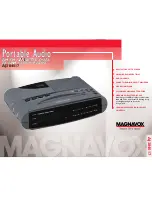
La Crosse Technology, Ltd
Page 6
Outdoor sensor fell. The sensor no longer works.
Explanation: If there is no physical damage to the outdoor sensor, the fall may not have caused internal
damage. A fall can shock the outdoor sensor or the batteries in the outdoor sensor. Batteries that have
fallen on a hard surface may be damaged and unable to function properly.
•
•
Use
dated at least six years in advance of the current year. Batteries dated earlier than six
years from now may still work but may be unstable in performance.
Note: An outdoor sensor that has fallen into puddle, snow, or other standing water, will likely have water
damage and need to be replaced. Outdoor sensors are water resistant, not waterproof.
HI | LO Temperature readings
Explanation: The atomic clock shows the HI | LO temperatures with Time and Date Stamp.
View Records:
From normal display, press and release the + (PLUS) button to view Indoor/Outdoor Temperature HI | LO
records with Time and Date.
Reset HI/LO Records:
While viewing individual records, hold the - (MINUS) button to reset.
Mounting/Positioning Outdoor sensor
First: Place the Outdoor sensor in the desired shaded location and the atomic clock in the home. Wait
approximately 1 hour before permanently mounting the Outdoor sensor to ensure that there is proper
reception.
POSITION
Outdoor:
•
Protect the Outdoor sensor from standing rain or snow and from the overhead sun, which can cause it
to read incorrectly.
•
Mounting under an eave or deck rail works well.
•
If you choose, you can construct a small roof or box for the Outdoor sensor. Be sure a box has vents.
•
Mount the Outdoor sensor on the North side where to prevent sun from causing incorrect readings.
•
Mount at least 6 feet in the air for a strong RF (radio frequency) signal.
•
Do not mount the Outdoor sensor on a metal fence. This significantly reduces the effective
range
.
•
Outdoor sensors are water resistant, not waterproof.
Indoor or Outdoor:
•
Mount Outdoor temperature sensor vertically.
•
Avoid more than one wall between the Outdoor sensor and the atomic clock.
•
The maximum transmitting range in open air is over 330 feet (100 meters).
•
Obstacles such as walls, windows, stucco, concrete and large metal objects can reduce the range.
•
Do not mount near electrical wires, transmitting antennas or other items that will
interfere
with the
signal.





























